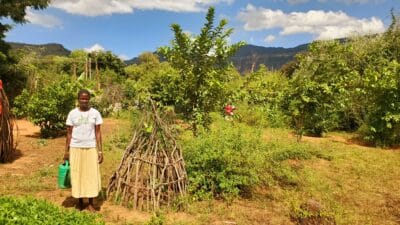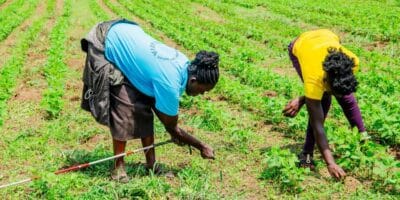Expert view
1 March 2017
The three key ingredients necessary to achieve food security in Africa

By Nicolas Mounard, CEO, Farm Africa
African farmers face one of the greatest balancing acts of the 21st century – feeding a rapidly expanding population, without causing irreparable damage to the environment they rely on. A monumental ask.
A meeting, organised by Farm Africa and the National Farmers’ Union (NFU), explored how the global agricultural sector can best address the nature and scale of the food security challenges.
More mouths to feed
With Africa’s population set to surge to 2.4 billion by 2050 the continent will inevitably continue to see rapidly rising demand for food.
Pushing up supply to meet demand is no easy feat, a challenge compounded by climate change, but as Tim Smith, Group Quality Director at Tesco and Farm Africa’s latest board member, noted “Fifty years ago, commentators said it would be impossible to feed the population we have now. Yet between everybody working up and down the supply chain those naysayers have been proved wrong”.
The stakes have never been so high. Africa needs a clear roadmap on how to achieve long-term, sustainable food security.
Growing more, growing better
Here at Farm Africa, every day we see the effect that increasing farmers’ productivity can have. After helping farmers develop agronomic skills and improving their access to quality inputs, we’ve routinely seen agricultural yields double within the space of a year. These are much needed gains, given that the average African farm performs at only about 40% of its potential.
Increasing productivity needs to be an integral part of tackling food insecurity, but it represents only a part of the problem: environmental sustainability and access to markets are equally important.
Degrading the environment degrades food security
The environment is the largest determinant of agricultural productivity; when the ecosystem is degraded, future agricultural yields are put at risk. For food security efforts to be successful, environmental concerns must be paramount.
Our work in Ethiopia’s Bale Eco-region is a case in point. Deforestation in the highlands is reducing the flow of water to the lowlands, putting a strain on the agro-pastoralists who live there and make a living from growing crops and rearing cattle.
By not only helping the lowland farmers to improve productivity, but also working to reverse deforestation and conserve the watershed, we’re helping assure these farmers’ access to the most basic of environmental resources necessary for their work: water.
To secure agricultural productivity and livelihoods farmers must focus on counteracting the damage being done to the environment, as well as supporting existing conservation efforts made by local communities.
The efficiency revolution
Inefficiencies within the food system – the logistical, market and policy factors that form the foundation of all food networks – also undermine food security. Even when yields are good, farmers face another huge constraint: the lack of access to markets.
Tanzania and Uganda typically produce a surplus of staple crops, such as maize, every year, Kenya only grows enough maize to feed itself one year in every five. Historically, high tariffs on trade within eastern Africa have meant that it has been cheaper for Kenya to import crops from outside Africa. These policies have now changed, opening up new opportunities for regional trade.
Farm Africa is helping Ugandan and Tanzanian farmers make the most of this new market, providing communities with the resources and knowledge to produce high-quality grain, store it safely and get top prices from the market helping to secure food for Kenyan consumers year round.
Going forward
Africa’s well documented fight for food security can seem an uphill struggle. But, here at Farm Africa we are hopeful.
We’ve witnessed a meaningful change in attitude, actors across the supply chain are adopting an integrated approach to food security issues that doesn’t just include a focus on increased production but, crucially, market efficiencies and environmental protection.
This blog was originally published by Thomson Reuters Foundation.




